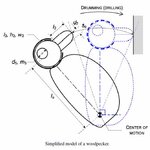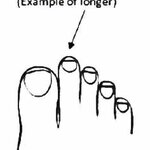Humor

What happens in our brain when we see banknotes being ripped up? Or, put another way, “Is our attitude to money like that to any other tool even though its use is symbolic and is not implemented in its physical structure?”
To find out, the researchers from the Center of Functionally Integrative Neurosciences at Aarhus, Denmark, and the Center for Cognitive Science, Turin, Italy, asked experimental subjects to watch banknotes being destroyed whist undergoing a brain scan.
“Knowledge of the functional use of concrete tools, such as hammers or screwdrivers, has been associated with…

“Conversation analysts have used the term ‘laughter’ to refer to the free-standing tokens heh, hah, huh and the like.”
But could there be other laughing-related modes of behaviour? Perhaps suggesting the necessity for a broader definition? Researchers professor Cecilia E. Ford, of the University of Wisconsin-Madison, US, and professor Barbara A. Fox, from the University of Colorado-Boulder, US, hint that there may be in their essay ‘Multiple practices for constructing laughables‘ (In: Barth-Weingarten, Dagmar, Elisabeth Reber and Margret Selting (eds.), Prosody in Interaction. 2010. xxi, 406…

In his 2010 discussion paper Competitive careers as a way to mediocracy Professor of Business Administration, Matthias Kräkel, (presently at the Bonn Graduate School of Economics, Germany), provides a contemporary corollary to the well-known Peter Principle (1969). Which famously states that:
“Individuals are promoted until they reach their level of incompetence.”
Or, put another way,
“Work is accomplished by those employees who have not yet reached their level of incompetence”.
The new paper first defines a ‘Mediocracy’ as – “A society in which
people with little (if any) talent and skill…

“Hand claps are a relatively primitive conveyor of sonic information, yet they are widely applied for different purposes.”
Primitive
though they may be, given just a simple audio recording of a single
handclap, is it possible to determine the hand-configuration of the
clapper via a computer-assisted digital analysis of the sound?
Researchers Antti Jylhä and Cumhur Erkut at the Laboratory of Acoustics and Audio Signal Processing, Helsinki University of Technology, TKK, Espoo, Finland reveal that, yes, it is.
Their paper: INFERRING THE HAND CONFIGURATION FROM HAND CLAPPING SOUNDS (…

Almost three years have passed since the US
patent for a Domestic
Animal Telephone was issued. The patent describes :
“A phone for pets and pet owners is
taught [sic?] which allows the owner to call the house and
‘talk’ to the pet”.
But then, in Feb. 2011 a
new patent was issued (also entitled 'Domestic Animal Telephone') to the same inventors – at first
glance strikingly similar to the original :
“A phone for pets and pet owners is
taught [sic?] which allows the owner to call the house and
‘talk’ to the pet”.
– but on closer inspection revealing an
important new feature which might radically…

Can owning a dog or cat be classed as a dangerous activity? Judy A. Stevens PhD.
and colleagues at The Division of Unintentional Injury Prevention, of
the US National Center for Injury Prevention and Control have completed
their report – Dogs and cats as environmental fall hazards – which is published in the Journal of Safety Research,Volume
41, issue 1, February 2010, Pages 69-73.
The team estimates that more
than 86,000 US residents are injured each year by unfortunate accidental
interactions with cats and dogs. Data*
collected over a period of six years demonstrated that dogs are…

“A woodpecker is known to drum the hard woody surface of a
tree at a rate of 18 to 22 times per second with a deceleration of 1200
g, yet with no sign of blackout or brain damage.”
Suggesting, to some, the question : “How does the bird strike its beak against a tree repeatedly without brain damage?”
A research team from the Molecular Cell Biomechanics Laboratory and the Department of Mechanical Engineering,
at the University of California, Berkeley, are amongst the first to
have experimentally investigated the birds’ extraordinary talents with a
view to developing novel woodpecker-…

As many of you know, I spent a fair amount of time last month engaged in debates about the wisdom of California’s Proposition 37, which would have mandated the labeling of genetically modified foods. While many of these discussions were civil, one particularly energetic fellow accused me of having been brainwashed by the “cult of the NIH” into believing that anything science does must be good.
At the time I just giggled. But his Tweet stuck in my head. After the election I looked back on my twenty years as a scientist in the “NIH system” and I began to see the signs. So I read about cults –…

Q.1 Is it possible to use one’s tongue as a subatomic particle detector?
Q.2 If so, would that be a good idea?
According to Professor Stefan Frings,
of the Frings Group at Heidelberg University Institute of Zoology,
Heidelberg, Germany, it looks as though the answer to both questions is
‘Yes’.
He provides a general overview of such discoveries, in Proceedings of the National Academy of Sciences of the United States of America,
PNAS December 2010 107 (51) 21955-21956. Drawing attention to the fact
that the ability to detect ‘sour’ tastes is one of the least
well-understood gustatory…

A growing body of scientific studies have examined the implications of finger length ratios. But until recently up to 50% of humanoid distal appendages may have
been largely overlooked – for what of toe-length ratios?
Progress
towards rectifying this digital imbalance has been made with a recent
study from the Department of Psychology, Penn State University,
Harrisburg, US. Professor Marissa Harrison has published one of the very few studies to investigate :
AN EXPLORATORY STUDY OF THE RELATIONSHIP BETWEEN SECOND TOE LENGTH AND ANDROGEN LINKED BEHAVIORS (Proceedings of the 4th Annual…